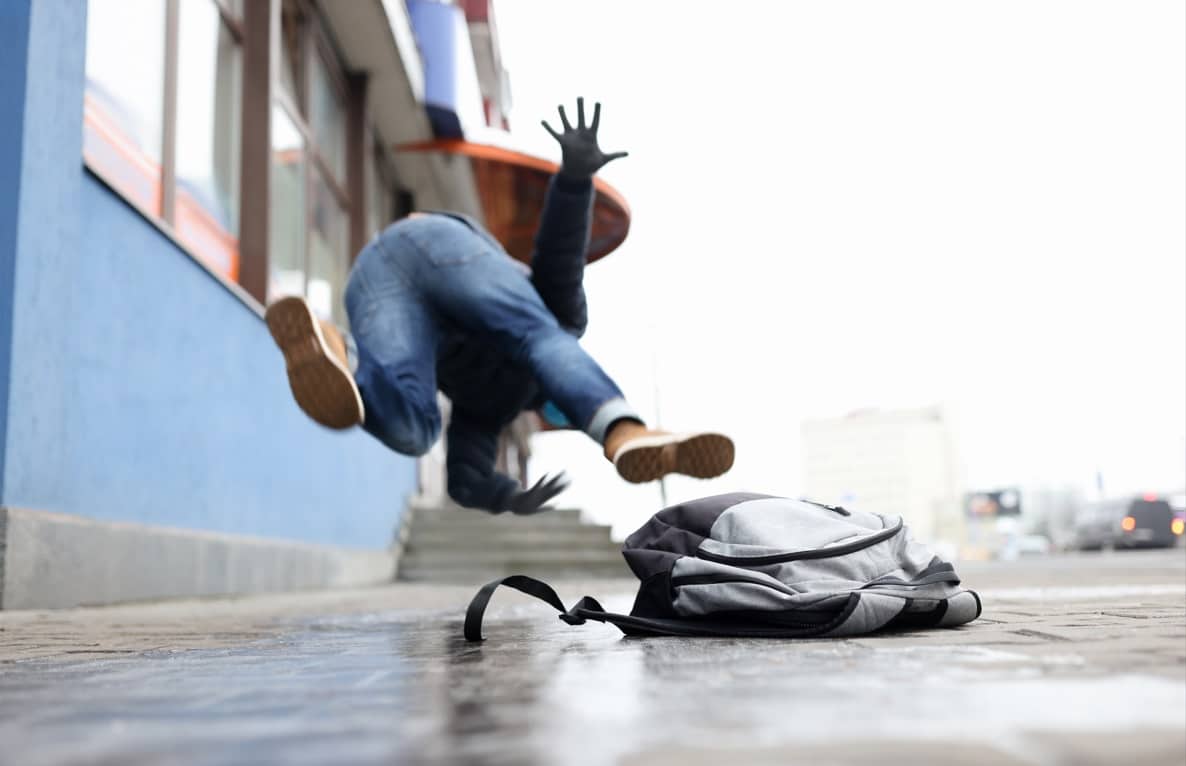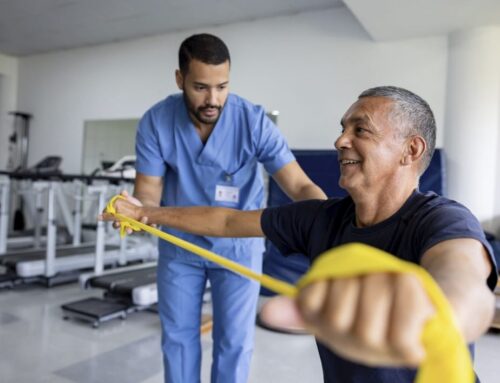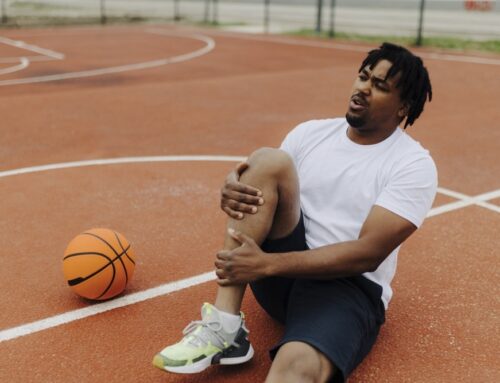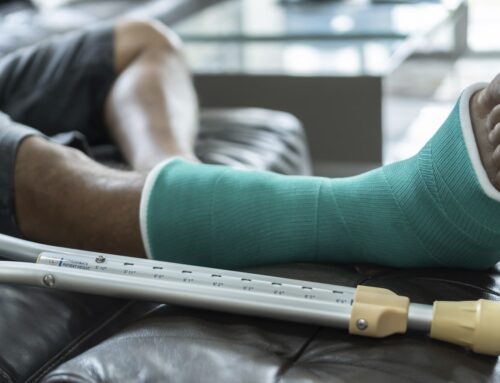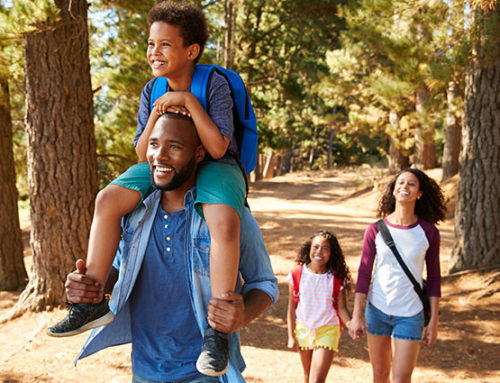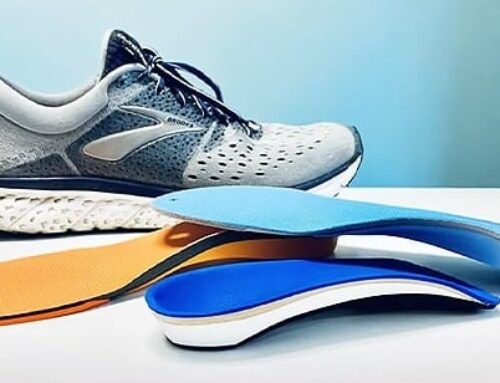Slips and falls can cause back, hip and knee injuries. Falls are common in Americans over 65, according to the Centers for Disease Control (CDC), but they are preventable. Injuries from falls do not have to be a part of aging. Our orthopaedic experts offer these tips for trip, slip and fall prevention.
Risk factors
The CDC reports that around 36 million older adults report falls every year, making them the leading cause of injury for that age bracket. Falls result in broken bones or head injuries in one out of five falls.
People over 65 are more likely to fracture a hip due to a fall because of weakened bones from conditions like osteoporosis. It is more common for women to fall more often than men, and they run a higher risk of fracturing a hip.
Hip fractures are painful and usually require surgery. In many cases, a fractured hip can lead to other health problems. During recovery from surgery, limited mobility and increased dependence on others can cause other health problems, including mental health issues like depression.
Common causes
Slips and falls can be caused by physical, environmental or health factors. Older adults should take extra precautions to safeguard themselves against falls by assessing their home life, physical abilities and medications.
Most falls happen at home because that is where we spend most of our time. Older Americans who are retired are less likely to experience a work-related fall. A home that works for someone early in life may not be appropriate for someone with limited mobility or age-related issues.
Physical abilities play a large part in a higher risk of falls. As we age, we may exercise less because of other health conditions, experience a loss of muscle mass and bone density or have poor balance.
Some medications can increase the risk of falls, including drugs for blood pressure, diabetes, mood, sleep or pain. Conditions like poor vision or hearing, arthritis of the joints or degenerative diseases can increase the risk of falling.
Trip, slip and fall prevention
Older adults can reduce their risk of falling by making a few changes to protect themselves. In many cases, a fall may result from multiple factors, so you may need to address several areas of your home and health. Here is a checklist of items to consider in preventing a serious slip and fall.
Talk to your doctor
Tell your primary care physician your concerns so you can review health conditions and medications that may contribute to a fall. Some drugs can make you feel dizzy or sleepy, so your doctor may want to change the dosage or the time you take it. If you have fallen previously, let your doctor know.
If you have spine, joint or muscle issues that limit your mobility, talk to your orthopaedist about treatments that can improve your condition, including physical therapy, medication or orthotics.
Make sure you are wearing proper eyewear with your current prescription to prevent limitations in your vision.
Assess your home
Make changes to your home to ensure your safety. Remove clutter, exposed appliance cords, slippery throw rugs and other items that can be a trip hazard. Keep your walkways clear, including staircases and doorways.
Keep kitchen items you use in places you can reach to avoid using a step stool to reach them. Purchase a reach extender to help you get items that are too low or high to grab. Clean up spills quickly to prevent slippery surfaces.
Install grab bars in the bathroom to make it easier to get in and out of the tub or use the toilet. Make sure that your bathmats have non-skid bottoms to avoid slipping on them.
Check lighting throughout the house and replace it with brighter bulbs in darker areas of the home.
If you have a washer and dryer in the basement, see if you can have it installed on the main level to avoid carrying baskets of clothes up and down steps. Or ask a family member or friend to help with laundry weekly.
The National Institute on Aging has several resources for home modifications for slip and fall prevention.
Improve your balance
Losing balance due to weak muscles is a common cause of falls. Talk to your doctor about moderate strength-building exercises you can do to build stronger muscles and improve balance.
Your doctor may suggest low-impact exercises such as:
- Walking with a friend
- Yoga to increase joint flexibility and balance
- Tai Chi to improve balance
- Community classes specifically for specific age groups
- Resistance band workouts to do with minimal equipment
- Physical therapy
Preventing slips and falls at any age
Statistics show that people over 65 are more likely to slip and fall, but these types of accidents can occur at any age and for a variety of reasons.
- Toddlers just learning to walk need to be supervised when they are exploring. Childproofing a home with steps, balconies and windows can prevent serious injury.
- Children and teenagers can slip or fall during a sports activity, so make sure they wear the proper equipment to protect against head injuries and fractured elbows or knees.
- Adults with limited mobility due to health conditions or people who have sedentary lifestyles can be at risk of a fall if they have strength or balance issues.
- People of all ages should be aware of their surroundings when walking on an uneven surface, taking stairs or walking when it’s dark.
- Weather conditions can increase the risk of slips and falls. Rain, ice and snow can make walkways slippery.
Everyone can benefit from learning about ways to prevent trips, slips and falls. By taking measures to identify causes and make changes to improve safety, you can reduce your risk of falling to protect yourself and your family.
Cary and Raleigh orthopaedic doctors
The board-certified doctors and physical therapists at Cary Orthopaedics understand the importance of slip and fall prevention. If you have concerns about a condition that may increase your risk of a fall, please contact us to make an appointment.

